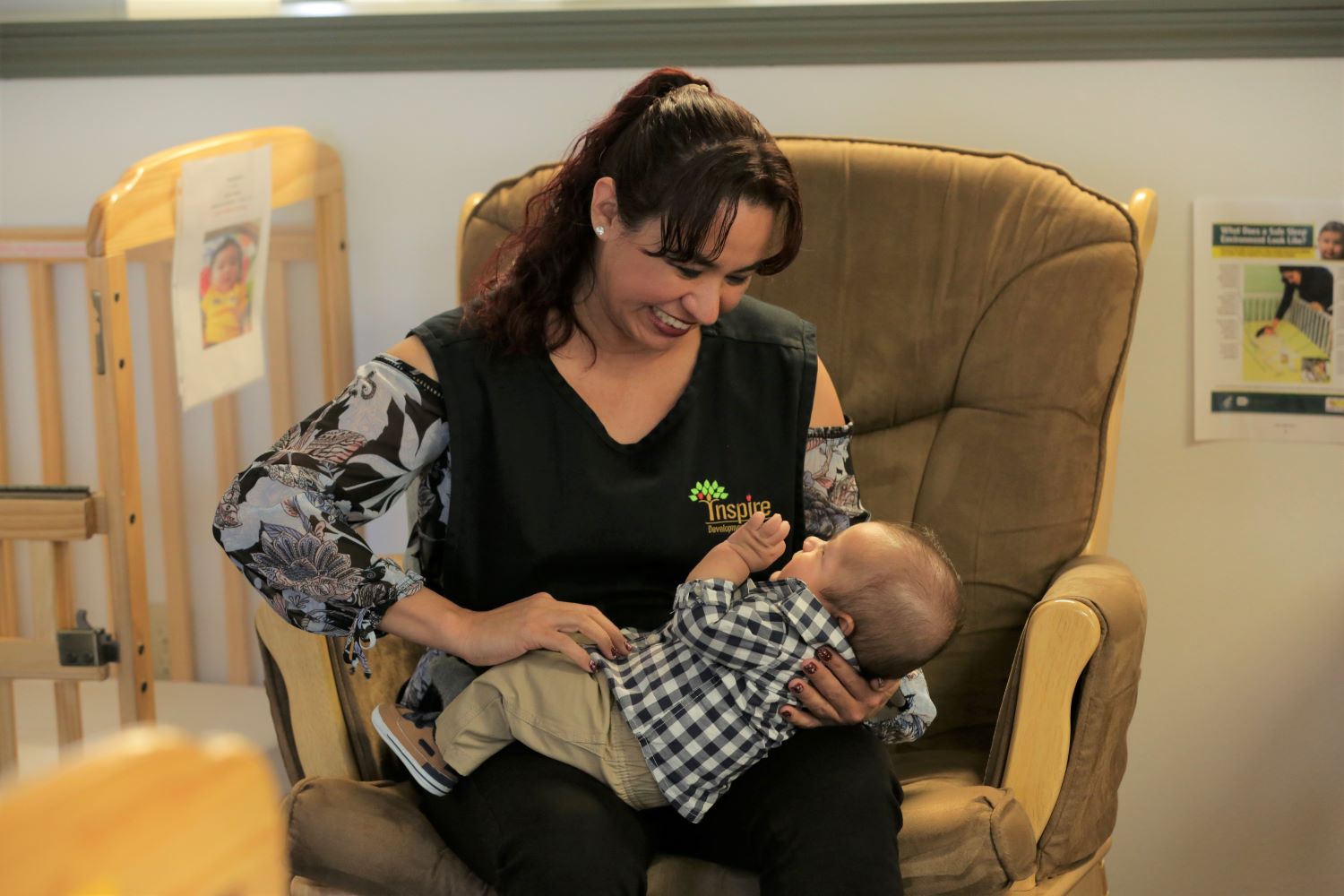
Daily interactions with infants and toddlers are the foundation of quality care. It is within the context of secure, nurturing relationships with parents, family members, and other caring adults that healthy infant and toddler development and learning happen. Individualizing care involves tailoring these interactions to the needs of each child. (See 45 CFR 1302.31(b)(2) and 45 CFR §1302.35(b)(1) and (c)(2).)
No two infants or toddlers are the same; each child is unique. One “size” of interaction cannot fit all children. To tailor interactions, teachers, home visitors, and family child care providers observe children, engage with families, and, combined with knowledge of child development, use what they learn to guide how they interact and respond with the child. They read his or her cues and respond in nurturing ways based on individual characteristics, including the child’s age, abilities, needs, and interests, as well as temperament, home language, and family culture.[2]
Infants and toddlers communicate their feelings, interests, and intentions through their behavior. Discovering what their behavior means is an important part of responsive, individualized interactions. Petersen and Wittmer suggested some questions that education staff can use to reflect on what children’s behaviors might mean:[3]
- What is the child experiencing? What is the child thinking?
- What is the behavior and when, where, and with whom does it occur?
- What wants or needs is the child communicating? What is the purpose of the child’s behavior? What is the meaning of the child’s behavior?
- What do her family and I want the child to do, learn, and feel?
Staff can share these questions with families to help deepen their understanding of children. As staff and families answer these questions, they gain insights into how to interact with each child. There are many ways adults can interact with children, such as:
- Verbal language
- Sign language
- Nonverbal communication (e.g., gestures, facial expressions)
- Physical touch
- Gentle or active movement
- Use of space between the adult and child
Interactions that are respectful and responsive to each child’s individual needs let children know their feelings, interests, and intentions are recognized and valued.
[2]U.S. Department of Health and Human Services, Administration for Children and Families, Office of Head Start , Early Head Start National Resource Center (EHS NRC), News You Can Use: Developmentally Appropriate Practice (Washington, DC, 2011).
[3]Petersen and Wittmer, Endless Opportunities, 72.
Read more:
Resource Type: Article
National Centers: Early Childhood Development, Teaching and Learning
Age Group: Infants and Toddlers
Audience: Directors and Managers
Last Updated: September 12, 2024